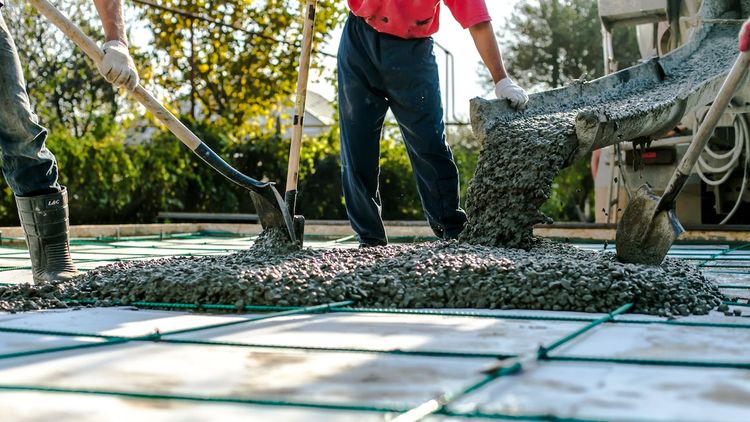Concrete's Sustainability Will Be Key to the Future of Construction

Based on the findings of the United Nations Environment Programme, it was determined that in the year 2021, the buildings and construction industry contributed to approximately 37% of the worldwide CO2 emissions related to energy usage and manufacturing processes. As a consequence, the UN has set forth a goal for this sector to reduce emissions by 50% within the next decade, and ultimately achieve a state of net-zero emissions by the year 2050. While it is crucial to decarbonize the industry, it is equally important for contractors to strike a balance between enhancing sustainability and addressing other significant concerns in the field, such as delivering long-lasting, financially viable, and timely projects.

Issues With Concrete
Concrete is a popular construction material due to its strength, cost-effectiveness, and adaptability. Nevertheless, it is notorious for being a major contributor to carbon emissions. The production of cement, the main ingredient in concrete, is responsible for eight percent of all human-generated emissions due to its energy-intensive production process. Although concrete seems plentiful, as it incorporates renewable resources like sand, gravel, and water, excessive use of these materials can still harm the environment.
The cement production sector is currently examining ways to decrease emissions. However, at present, we must address the issue of how to make the most efficient use of the ample amount of concrete present in current infrastructure. Concrete is widely utilized in the construction of building foundations due to its cost-effectiveness, long-lasting nature, and insulating qualities. It is evident that the industry will continue to employ this material for foundation construction purposes due to its exceptional performance. Concrete is also a favored option for flooring purposes as the floor's robustness significantly contributes to the overall structural stability of the building.
Concrete is a widely used option when it comes to flooring because the durability of the floor plays a crucial role in the overall stability of the building. Thus, the majority of subfloors, which serve as the base for floor coverings, are constructed using concrete. Although it may not be the most environmentally friendly material to produce, concrete flooring proves to be a beneficial choice for contractors aiming to create cost-effective and sustainable infrastructure. This is primarily due to concrete's extended lifespan, low maintenance requirements, and its ability to reflect and insulate heat, thereby enhancing energy efficiency.
Experts in eco-friendly flooring materials have proposed that the construction industry should replace some of its main floor coverings with more sustainable alternatives. Instead of using epoxy and vinyl, which harm the environment, it is suggested that natural materials like bamboo, cork, or hemp brick be used. This change could greatly reduce carbon emissions and promote circularity. Nevertheless, these natural coverings are often expensive and, in some cases, not practical. For instance, engineers working in industrial spaces may find it difficult to navigate equipment on a cork floor and might even damage it. Therefore, a sustainable material can only be considered if it is strong enough for the specific application it is intended for; otherwise, it will need to be replaced, resulting in unnecessary waste of materials.
The most eco-friendly choice is to utilize what is already present on the ground. Thankfully, refined concrete is already a well-liked flooring option, especially in expansive areas where its reflective nature can minimize energy consumption. Nevertheless, in the majority of existing structures, builders initially laid the underlying floor with the intention of concealing it with materials like epoxy, wood, or other types of coverings. As a result, when polishing the floor, it may not achieve the desired aesthetic appeal. It is possible that the gravel is unevenly distributed or that the area necessitated multiple batches of concrete, leading to variations in color, size of the gravel, and overall consistency.
In order to figure out if contractors can make an existing surface smooth and noticeable in the end, they need to examine the state of the concrete and identify any cracks, impurities, or uneven parts that need fixing. If there are any problems, the contractor should talk about them with the client. By manually grinding a small section of the floor to expose the aggregate, they can get a good idea of what the final outcome might look like before proceeding to grind and polish the entire floor.
Ready For The Future
While constructing new infrastructure, contractors may consider laying concrete foundations with a smooth and glossy finish. To achieve this, they can pour the concrete in a manner that results in a thin layer of evenly distributed aggregate near the surface. After the concrete has cured but before other structures are constructed, the contractors can grind and polish the floor to achieve the desired surface profile throughout the entire space. For effective grinding and polishing, contractors should initially use tools with a lower grit and gradually increase the grit size, thereby reducing the size of the scratches until the desired polished finish is attained. It is important for contractors to be aware that concrete behaves like a sponge and is prone to staining if left untreated. Hence, they should apply a densifying agent around the 200-grit stage. This will reduce the porosity of the finished concrete and enhance its durability during the final polishing step.
Not every area can accommodate a sleek, gray concrete floor, which is why certain builders are venturing into alternative techniques to provide more choices. By staining or painting the concrete in advance, it is possible to achieve a polished appearance resembling marble or ceramic tiles. Alternatively, some businesses adopt a combination of stamps, scoring, and staining to transform concrete into the likeness of wooden flooring.
Even though concrete may not appear as environmentally friendly as natural materials, its long-lasting nature and strength make it an essential element in the construction industry. However, if we shift our perspective and appreciate the inherent beauty of concrete instead of merely considering it as a covering, it could become the most eco-friendly choice for flooring.
The following article was initially released on Premier Construction News.

































































